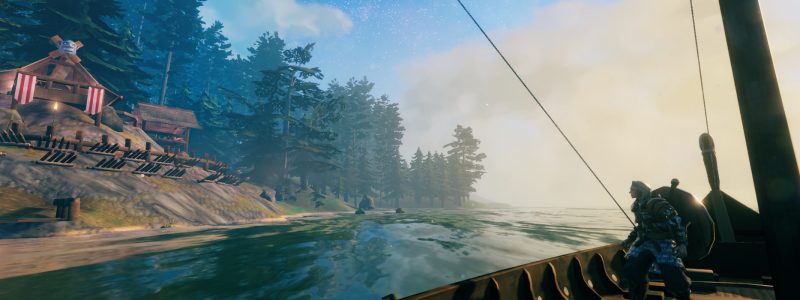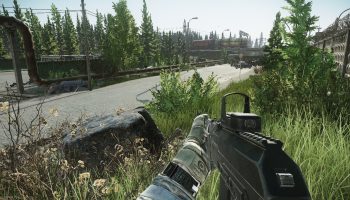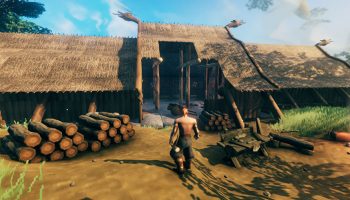* I added a spoiler tag due to the discussion of magic in the mistlands. Not sure if that should be considered a spoiler or not. *
Hi, all. I was reading a discussion the other day in Reddit about the introduction of magic in the mistlands. There was an interesting disagreement about the decision to introduce magic six biomes into the game, and I thought it brought to light some interesting game design decisions. There were a lot of comments, but the ones I’m interested in were between those who wanted magic to be introduced much earlier in the game, and those who were trying to explain why that wouldn’t make sense for Valheim. There’s an interesting tension between roleplaying games that give players choices about how they want to inhabit the game world, and games that are more like linear power narratives that present a series of challenges or puzzles of increasing difficulty for players to solve. They aren’t mutually exclusive categories, but they can be at odds.
If a game is designed as a large puzzle, you can make a very good puzzle with a single solution. Giving players multiple approaches to gameplay, as with open world and roleplaying games, is much more complicated. The maze needs to have multiple entrances, and possibly multiple solutions, and the paths available to one player may no longer be available to another. This is a much different game design problem.
I find it helpful to think about as a discussion between game designer and player. If the game designer says, “I’m going to present you with enemies and environments that are puzzles for you to solve, and the fun will be had in finding the solutions to the puzzles.” Then, when the player discovers, say, that an enemy is weak to fire, and they make a fire weapon and use it to kill a formerly difficult enemy, they feel good. If the game designer says, “I’m going to present you with choices to make about what kind of character you want to be in this game world, you are free to choose any of them, and the fun will be had in projecting your imagination or sense of identity into the game world.” Then, when the player sees the range of options to choose from, they feel good when they make the choice that best reflects their personal interests. This can be especially rewarding in a multiplayer or cooperative environment, where appearance or variety of experience feels more meaningful.
But you can already see the potential issues. If game designers present players with multiple paths into the maze, but it turns out that only one of the paths actually reaches the finish line, that will be a disappointing experience for the players that hit a deadend. On the other hand, if you design a maze with multiple entrances, and they all trivially reach the finish line, then the satisfying difficulty of the maze is undercut.
At this stage in its development, there is a bit of both in Valheim. Overall, I think they’ve done a wonderful job of blending lots of interesting systems into a very enjoyable experience. I have about 700 hours in the game through solo and cooperative playthroughs, and I’m nowhere near done with it. As I’m thinking about how the game design team will find their way to the release of the game, I’ve become curious about how they’ll solve some of the remaining challenges.
Back to the discussion on magic. I think there’s some confusion on the part of at least some players about introducing magic so late in the game, because it appears to be more of a roleplaying decision than a puzzle-solving decision. The game designers appear to be saying, “Both of these options are viable in the puzzle-solving dimension of the game, and the path you choose depends on how you want to inhabit the gameworld.” I think it’s natural that there would be some confusion about this, because players are accustomed to making roleplaying decisions–decisions about how they want to play the game–much earlier in the game.
The responses from those trying to explain why that wouldn’t make sense in a game like Valheim were making the case for the game being more of a linear power narrative. You begin a weak, nearly-naked viking, and eventually you’re eating serpent stew and swinging a magic hammer, and you tear through draugr like tissue paper. The interesting decisions are about finding the right solutions to the increasingly-difficult puzzles presented by the designers. It doesn’t matter if your choices are different from your friend’s choices. You don’t choose a spear to be a Spear Wielder, or a Mace to be a Mace Character, you simply choose the path that gets through one maze, and helps you find the next.
I’m really curious to see what path the designers will pick. They seem to be opening up some roleplaying paths. The upcoming Hildr’s quest is in the roleplaying and aesthetic space. On the other hand, the design of enemies around resistances and weaknesses tends to constrain what kinds of playstyles are really viable. And I think that has led to some of the experiences in which players feel disappointed that some of their early crafting decisions didn’t feel rewarded later in the game. And when you go online to find tips, the answers are along the lines of “Don’t bother with weapon X, just use weapon Y for biome A, and weapon Z for the boss.” And that’s a bit like learning that the path you chose to start the maze (“I want to be a stealthy character that uses daggers!”) ended in the mountains with a string of corpse runs, until you were wearing wolf armor and swinging melee weapons like all of your friends.
Are others finding the same thing? Or do more players enjoy one playstyle over the other? Or would a blend of the two be the best path ahead?
Source: https://www.reddit.com/r/valheim/comments/11b0gjr/roleplaying_choices_in_valheim/







